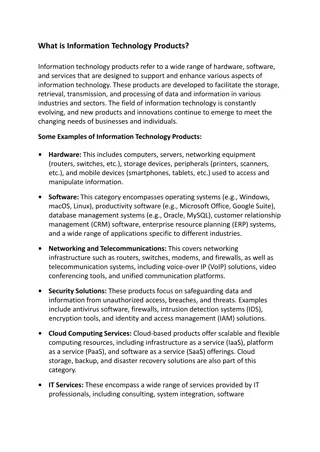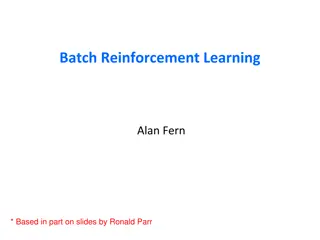Deep Reinforcement Learning for Mobile App Prediction
This research focuses on a system, known as ATPP, based on deep marked temporal point processes, designed for predicting mobile app usage patterns. By leveraging deep reinforcement learning frameworks and context-aware modules, the system aims to predict the next app a user will open, along with its open time, to enhance user experience and optimize smartphone memory usage. The use of temporal point processes further enhances app prediction accuracy, providing insights into user behavior patterns and preferences.
Download Presentation

Please find below an Image/Link to download the presentation.
The content on the website is provided AS IS for your information and personal use only. It may not be sold, licensed, or shared on other websites without obtaining consent from the author.If you encounter any issues during the download, it is possible that the publisher has removed the file from their server.
You are allowed to download the files provided on this website for personal or commercial use, subject to the condition that they are used lawfully. All files are the property of their respective owners.
The content on the website is provided AS IS for your information and personal use only. It may not be sold, licensed, or shared on other websites without obtaining consent from the author.
E N D
Presentation Transcript
ATPP: A Mobile App Prediction System Based on Deep Marked Temporal Point Processes Kang Yang1, Xi Zhao2, Jianhua Zou2 , Wan Du1 1 2
Mobile Application Usages Can we predict both next app and its open time jointly? 3
Mobile Application Usages Loading 83 % Fast Apps launching Fast Apps searching 4
Mobile Application Usages Time prediction is important to avoid loading the next app too early 7% of the memory of the smartphone each day Z. Shen*, K. Yang*, W. Du, X. Zhao, and J. Zou, DeepAPP: a deep reinforcement learning framework for mobile application usage prediction, in ACM SenSys, 2019. Extended to IEEE Transactions on Mobile Computing.(*equal contribution) 5
Deep Reinforcement Learning for App Prediction (DeepAPP) App prediction agent server Smartphone Predicting the apps that a user will Context-aware module Contextual environment open in the next 5 minutes. Agent State User interface Policy Predicted results Input: current app, location and time. action Reward Scheduler module Feedback Z. Shen*, K. Yang*, W. Du, X. Zhao, and J. Zou, DeepAPP: a deep reinforcement learning framework for mobile application usage prediction, in ACM SenSys, 2019. Extended to IEEE Transactions on Mobile Computing.(*equal contribution) 6
7 Temporal Point Processes for App Prediction A random process whose realization consists of discrete events localized in time. apps time History probability density function 7
8 Temporal Point Processes for App Prediction Intensity Function A user opens 3 apps from 10:00AM to 10:05 AM ( ) t = event number 3 5 + ( ( E N t ) ( )) t t N t = ( ) t lim t 0 Junchi Yan, IJCAI2019 Tutorial: Learning Temporal Point Process 8
9 Temporal Point Processes for App Prediction Similar simple example: Gaussian distribution ( ) 2 x 1 = ( ) f x exp 2 2 2 Hawkes process: = + ( ) t ( ) t baseline intensity triggering function Alpha controls the likelihood of an event causing another event Omega controls the rate of decaying influence from previous events 9
10 Temporal Point Processes for App Prediction Parameter inference: Maximum Likelihood Estimation (MLE) ) ( N T = argmax ( ) i t exp ( ) d 0 = 1 i (log-)likelihood that generates a specific events sequence Prediction: ) ( += T t ( )exp t ( ) t t d dt 1 i t t i i the probability density function O. O. Aalen, rnulf Borgan, and H. K. Gjessing, Survival and event history analysis : a process point of view. Springer Science & Business Media, 2008. 10
11 Limitations Hawkes process: Practical user patterns: Strong Assumption 11
ATPP The key idea is to use the powerful capacity of the neural network to learn the intensity functions with a stronger fitting ability. 12
13 ATPP App Usage Event Sequence Context-aware Optimization Module Input Integrate App App-usage Event Predictor App ID & Open Time Representation 13
14 RNN-based App-usage Event Predictor RNN units Softmax Layer App ID 2 h 1h ih Temporal-app Vector G G G 1x 2x ix Fully-connected Layer Open Time ) ( += ( ) T t ( )exp t + ( ) t ( ) t t d dt = + + T i ( ) t exp( ( ) ) V V t t b = 1 t i t h t i t t t i i Hawkes process base intensity past influence current influence 14
Context-aware Optimization Module Drop-in app usage behavior Amazon, WhatsApp, Amazon, ApplePay 443 anonymized users 21 days 15
16 Context-aware Optimization Module Attention-based temporal feature extractor Amazon, WhatsApp, Amazon, ApplePay Temporal-app Vector 0.45 0.10 0.45 Attention Mechanism x x x x x x N N N 1 i 2 h N 2 h 1h G G G ix 1x 2x Amazon Amazon WhatsApp 16
Trace-driven evaluation Dataset: 443 users. 3 weeks. Two weeks for training and one week for validation. 17
Trace-driven evaluation Prediction accuracy. Performance gain of the proposed techniques. Parameter settings. 18
Overall accuracy - Hitrate Z. Shen*, K. Yang*, W. Du, X. Zhao, and J. Zou, DeepAPP: a deep reinforcement learning framework for mobile application usage prediction, in ACM SenSys, 2019. Extended to IEEE Transactions on Mobile Computing.(*equal contribution) 19
Overall accuracy - MAE 5.8 A. Parate, M. B ohmer, D. Chu, D. Ganesan, and B. M. Marlin, Practical prediction and prefetch for faster access to applications on mobile phones, in ACM Ubicomp, 2013. 20
Field study Participants: 22 (7 females and 15 males) Students, teachers, and employees, etc. Aged from 19 to 48 21 days Goals: Measuring the in-field accuracy Evaluating the real user experience 21
Field study Performance analysis 22
Summary An RNN-based MTPP app usage predictor to predict next app and open time jointly. An attention-based temporal feature extractor to consider drop- in app usage behavior. Extensive trace-driven experiments and a field study. 23
Thank you 24























